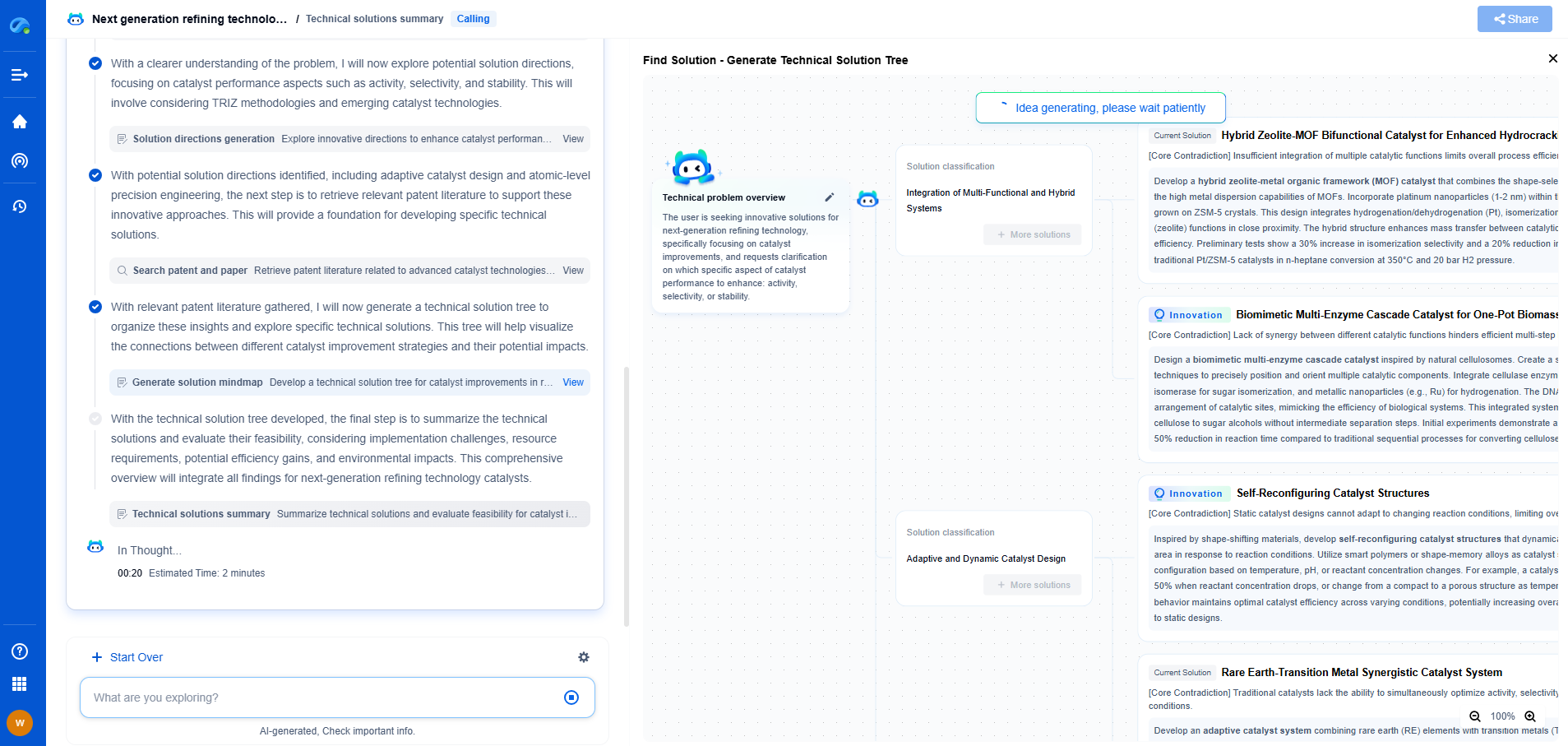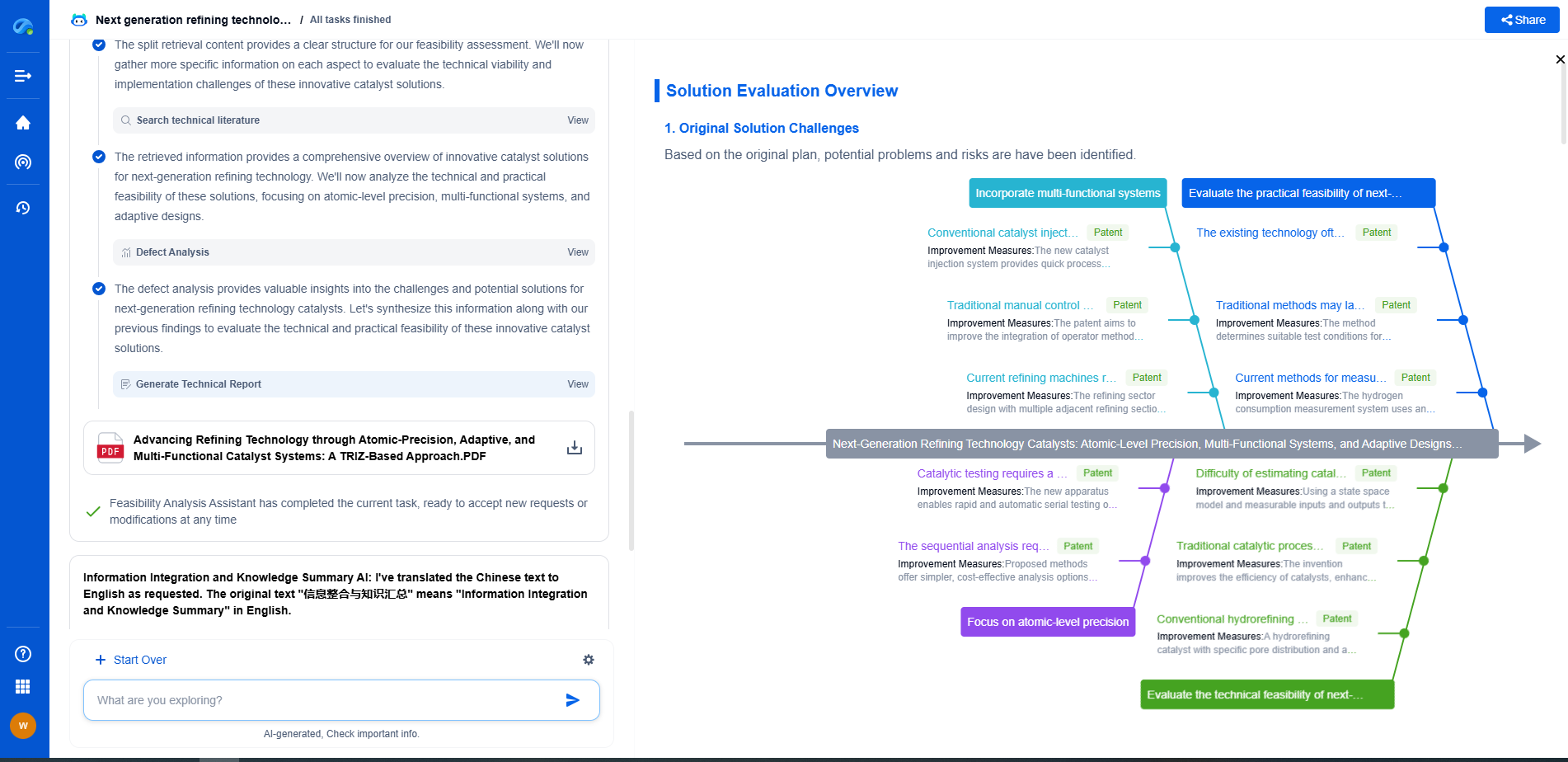How to reduce backlash in robotic joints
JUN 26, 2025 |
Understanding Backlash in Robotic Joints
Backlash is essentially the slack or lost motion in a mechanism caused by gaps between components. In the context of robotic joints, it manifests as an angular or linear displacement error which can significantly affect the robot's accuracy and repeatability. Common causes of backlash include wear and tear, poor assembly, and design flaws. Understanding the sources and implications of backlash is the first step in mitigating its effects.
Design Optimization
One of the most effective ways to reduce backlash is through thoughtful design optimization. By designing components with minimal clearance and incorporating preloads, engineers can significantly reduce the potential for backlash. Preloading involves applying a constant force to maintain contact between components, thereby minimizing gaps and lost motion. Additionally, using high-precision gears, such as harmonic drives or planetary gear systems, can inherently reduce backlash due to their tighter construction and reduced clearances.
Material Selection
The choice of materials plays a crucial role in backlash reduction. Materials with low thermal expansion coefficients can help maintain tight tolerances in varying thermal environments. Furthermore, using materials with high strength-to-weight ratios ensures that the components can withstand operational stresses without deforming, which could otherwise lead to increased backlash over time. Advanced materials such as composites or alloys are often preferred for their superior mechanical properties.
Advanced Manufacturing Techniques
Employing advanced manufacturing techniques can also aid in reducing backlash. Precision machining methods, such as CNC machining, allow for the production of highly accurate components with tight tolerances. Additive manufacturing or 3D printing can also be used to create complex geometries that are difficult to achieve with traditional methods, potentially reducing the number of joints and components where backlash could occur.
Regular Maintenance and Calibration
Regular maintenance is crucial for minimizing backlash in robotic joints. Components should be routinely inspected for wear and replaced as necessary to prevent performance degradation. Lubrication is another critical maintenance practice that reduces friction and wear, helping to maintain the tight fit of components and prevent backlash. Calibration of robotic systems ensures that any minor deviations are corrected, thus maintaining precision.
Implementing Feedback Systems
Feedback systems, such as encoders and resolvers, are essential for detecting and compensating for backlash in real time. These systems provide continuous information about the position of robotic joints, allowing for immediate corrections if any discrepancy is detected. The integration of advanced control algorithms can further refine these adjustments, enhancing the overall accuracy and reliability of the robotic system.
Future Trends and Innovations
As technology advances, new methods and materials are being developed to further combat backlash in robotic systems. Innovations in smart materials and adaptive control systems promise to offer even more effective solutions. Researchers are also exploring the potential of artificial intelligence to predict and compensate for backlash, creating self-correcting systems that require minimal human intervention.
In conclusion, reducing backlash in robotic joints is a multifaceted challenge that requires a comprehensive approach. By optimizing design, selecting appropriate materials, employing advanced manufacturing techniques, maintaining regular upkeep, and integrating effective feedback systems, engineers can ensure that robotic joints operate with the highest precision and efficiency. As technology continues to evolve, ongoing research and innovation will undoubtedly lead to even more advanced solutions to tackle the issue of backlash in robotics.
Ready to Redefine Your Robotics R&D Workflow?
Whether you're designing next-generation robotic arms, optimizing manipulator kinematics, or mining patent data for innovation insights, Patsnap Eureka, our cutting-edge AI assistant, is built for R&D and IP professionals in high-tech industries, is built to accelerate every step of your journey.
No more getting buried in thousands of documents or wasting time on repetitive technical analysis. Our AI Agent helps R&D and IP teams in high-tech enterprises save hundreds of hours, reduce risk of oversight, and move from concept to prototype faster than ever before.
👉 Experience how AI can revolutionize your robotics innovation cycle. Explore Patsnap Eureka today and see the difference.
- R&D
- Intellectual Property
- Life Sciences
- Materials
- Tech Scout
- Unparalleled Data Quality
- Higher Quality Content
- 60% Fewer Hallucinations
Browse by: Latest US Patents, China's latest patents, Technical Efficacy Thesaurus, Application Domain, Technology Topic, Popular Technical Reports.
© 2025 PatSnap. All rights reserved.Legal|Privacy policy|Modern Slavery Act Transparency Statement|Sitemap|About US| Contact US: help@patsnap.com

